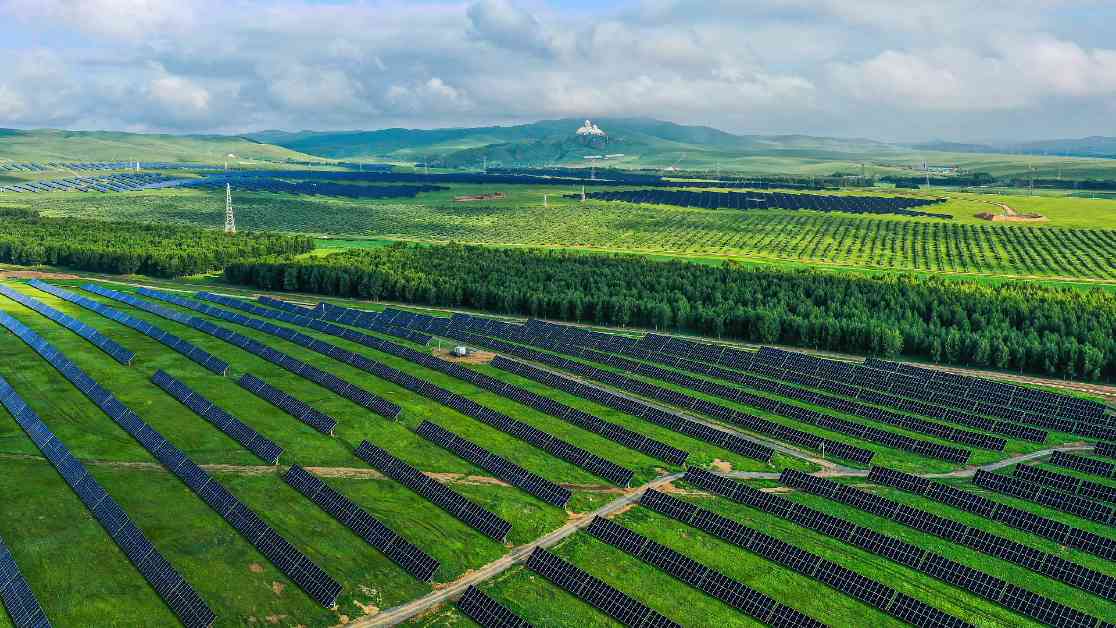China’s Green Transition Guidelines: Addressing Global Energy Challenges
China is taking significant steps towards a sustainable future with the launch of comprehensive guidelines aimed at accelerating the green transition across all aspects of economic and social development. These guidelines align with global efforts to combat climate change, as emphasized in BP’s Energy Outlook 2024, which underscores the urgent need to shift from fossil fuels to low-carbon energy sources.
The National Development and Reform Commission (NDRC) has issued these guidelines to provide a roadmap for China to make substantial progress in its green transition by 2030. By 2035, the country aims to have established a green, low-carbon, and circular economy, with the ultimate goal of achieving a “Beautiful China.” These guidelines couldn’t have come at a more crucial time, as global energy consumption patterns are under intense scrutiny, with BP’s report revealing that despite increased investments in low-carbon energy, global carbon emissions continue to rise.
### China’s Green Transition Goals
The guidelines outline a multifaceted approach that encompasses optimizing territorial space development, promoting green transitions in the industrial and energy sectors, and advancing green transportation and urban-rural development. Key objectives include increasing non-fossil energy to 25 percent of total consumption by 2030 and expanding the energy conservation industry to 15 trillion yuan (approximately $2.1 trillion).
One notable example of China’s commitment to green energy initiatives is the completion of a solar PV project at Nanjing’s Maqun Bus Depot in July. With 1,770 rooftop panels, the project generates green electricity for the depot’s operations while feeding surplus power into the grid. This initiative not only demonstrates a dedication to environmental goals but also signifies a significant step towards integrating public transport with renewable energy to foster sustainable urban development.
Liu Qiong, the director of the National Energy Conservation Center at the NDRC, emphasized the holistic nature of these guidelines. He stressed the importance of incorporating sustainability into every facet of development and promoting the green transition across all sectors and regions to enhance China’s development strengths and build a more competitive modern economy. The guidelines also target the green transition in consumption by encouraging people to adopt green and healthy lifestyles, thereby boosting green consumption and promoting the use of green products and new energy vehicles, especially in rural areas.
### Urgent Need for a Low-Carbon Shift Across the Globe
China’s green transition efforts are unfolding against the backdrop of a complex global energy landscape. According to BP’s Energy Outlook 2024, the world is currently in an “energy addition” phase where both fossil fuels and low-carbon energy sources are being consumed in increasing amounts. Spencer Dale, BP’s chief economist, highlighted the challenges of transitioning from this phase to an “energy substitution” phase, where low-carbon energy grows rapidly enough to reduce the consumption of fossil fuels and curb carbon emissions.
Despite the growing investments in renewable energy, global carbon emissions have continued to rise at an average rate of 0.8 percent per year over the past four years. This concerning trend raises alarms as the carbon budget estimated by the Intergovernmental Panel on Climate Change (IPCC) could be depleted by the early 2040s, making it challenging to limit global temperature rises to 2°C above pre-industrial levels.
China, being a major consumer and producer of energy, plays a pivotal role in the global energy landscape. The BP report suggests that China’s energy demand is projected to peak in the mid-to-late 2020s and then decline by 2050 under both the current trajectory and net-zero scenarios. This anticipated shift mirrors the broader trends in China’s energy consumption and the ongoing transition towards renewable energy. The guidelines underscore the importance of financial instruments and investment mechanisms in supporting green projects, such as extending carbon emission reduction support tools until the end of 2027 and developing green financing options.
However, challenges persist as China’s energy structure remains heavily reliant on coal, and fossil fuels continue to play a significant role in the economy. Moreover, global environmental and climate issues are becoming increasingly politicized, with green trade barriers on the rise. Dale emphasized the importance of addressing all three elements of the energy trilemma – security, affordability, and sustainability – for a successful and enduring transition. He warned that delaying the transition to low-carbon energy could lead to a costly and disorderly adjustment pathway in the future.
### China’s Influence on Global Energy Consumption
As the world grapples with the complexities of energy transition, China’s actions could significantly shape the trajectory of global energy consumption in the coming decades. By setting ambitious green transition goals and implementing comprehensive guidelines, China is demonstrating its commitment to a sustainable future and playing a crucial role in addressing global energy challenges. Through a concerted effort to transition towards renewable energy, China is not only leading by example but also paving the way for a greener and more sustainable future for generations to come.






















